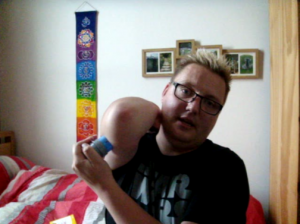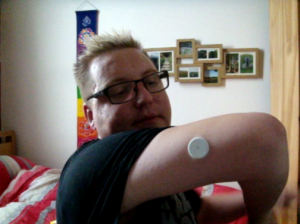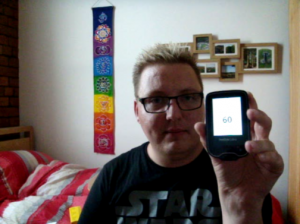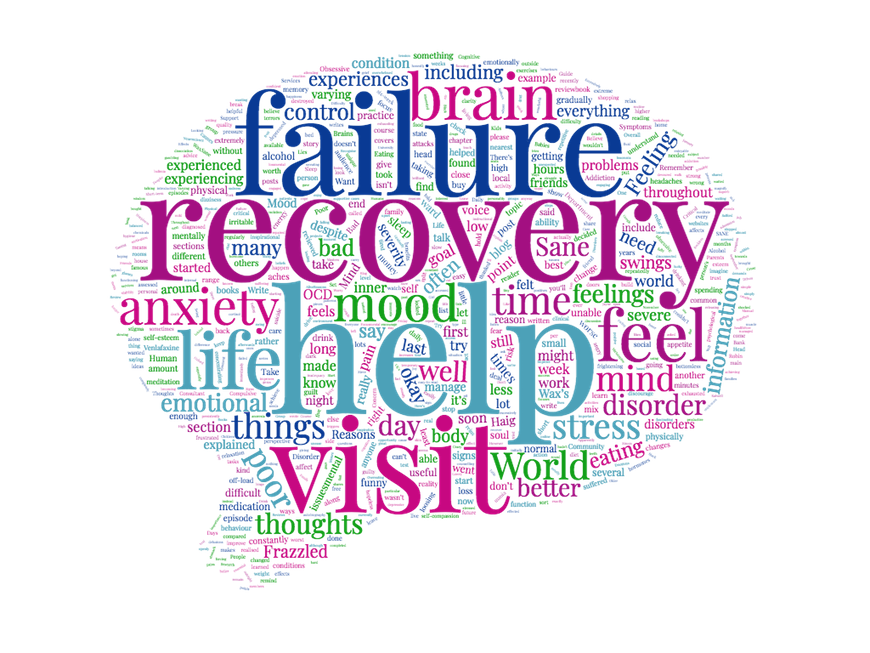Hello all,
I’m a type 1 diabetic who has always struggled to have good control of my blood sugars.
I’ve been using a traditional glucose meter (a TEE2). Every diabetic will have a glucose meter. The meter tells the tester what their blood sugar is at the time that the reading is taken.

My traditional glucose meter the TEE2 by Spirit Healthcare Ltd.
Nothing had really changed in the management or treatment of my diabetes for the last decade. That was until just over a week ago. It started when I saw this photo in the media:
I posted the photo on Facebook and asked if anyone knew what it was. I quickly learned that it was a sensor for the FreeStyle Libre Glucose Monitoring System.
 The FreeStyle Libre Sensor (left) and Reader (right). |
The FreeStyle Libre Glucose Monitoring System is a revolutionary and life changing way to monitor blood sugars for diabetics.
A sensor that has a needle that goes into the interstitial fluid is placed on the back of an arm. The sensor on the skin is about the size of a two pound coin. The sensor takes a reading every minute and stores readings at 15 minute intervals. The sensor can store 8 hours of data. A sensor lasts 14 days. |
A Reader downloads data from the sensor, including the most current blood sugar reading by placing the reader near the sensor (using Fear Field Communication (NFC)). You don’t even need a Reader if you have a phone with NFC. You can download an App available for both Android and Apple smartphones that allows you to use your phone as a reader. I haven’t got a phone with NFC, so would need a reader.

So I did some research. I read the entire FreeStyle Libre website including watching tutorial videos and FAQs. Then I read some posts on the Diabetes UK Forums. I watched every video about the FreeStyle Libre on YouTube.
I discovered that in November of last year (2017) the FreeStyle Libre became available on the NHS. However from reading the forums it seemed that availability depended on local criteria.
I decided I needed to trial the FreeStyle Libre as part of a new health plan to improve my health and prevent illness where possible.
The Diabetic Specialist Nurse at my local Diabetes Centre was amazing. She sorted me a Reader. I saw the Diabetic Consultant in January and have been awaiting an appointment with a Dietitian. She said she’d chase this.
The Diabetic Specialist Nurse and I also arranged an appointment together in a few weeks time. This is so I can give her an update on my use of the FreeStyle Libre and so that she could write to my GP about putting the sensors on prescription. She informed me that if there was no improvement in my blood sugar control after 6 months, that my GP may choose to stop prescribing the sensors.
Excited I put on the sensor:

I’ve been wearing the sensor and using the reader for a few days now. So here’s the pros and cons I’ve discovered so far:
| Pros | Cons |
|
|
I was going to do this blog posts as a vlog (video blog). But I couldn’t get my head around the video editing software, so opted for the written method instead. That’s why the photos of me look like image captures from a video, because they are.
The FreeStyle Libre Glucose Monitoring System is just one part of my new health plan. I also want to become SmokeFree for good and lose weight through a better diet and regular exercise.
Write soon,
Antony














